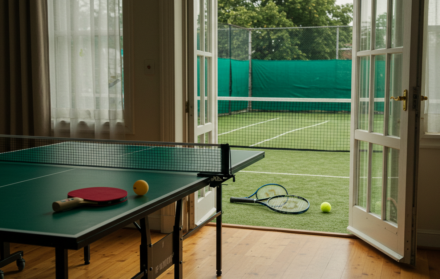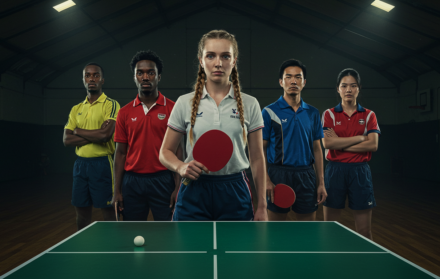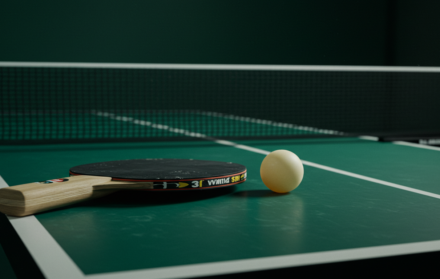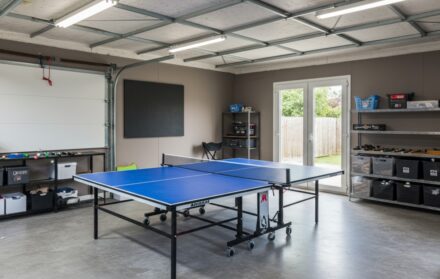
What Are the Basic Equipments to Play Table Tennis?
Table tennis is a fast-paced, skill-driven sport that anyone can enjoy, but playing well starts with having the right gear. Choosing the correct equipments to play table tennis helps ensure better performance, improved safety, and an overall more enjoyable experience. Whether you are practicing at home, playing recreationally, or preparing for club matches, knowing the essential items you need is the first step to getting started.
In this guide, we explore the core components every player should have: the table, the net and post set, the racket, and the balls. Each plays a critical role in the flow and fairness of the game.
Table Tennis Table
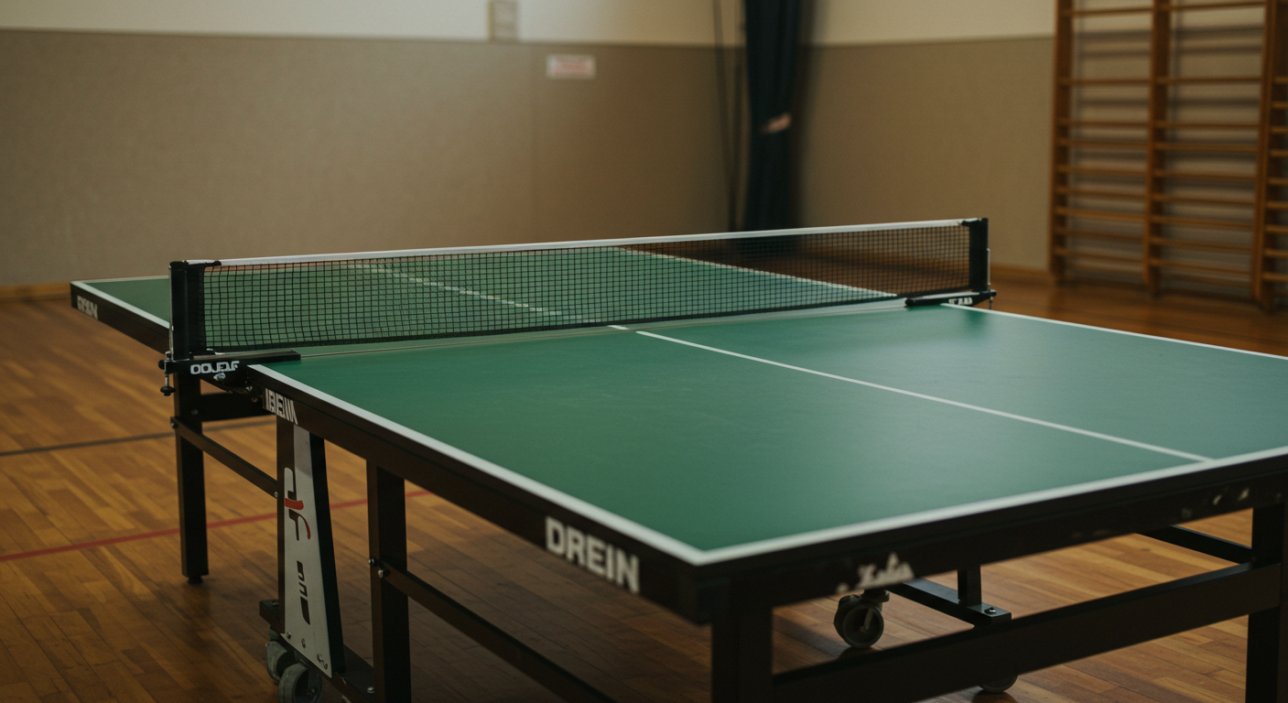
At the center of every match is the table. Its size, build quality, and surface condition affect every aspect of the game, from bounce consistency to player movement.
Dimensions and Features
A regulation table, approved for competitive play, measures:
-
Length: 2.74 meters
-
Width: 1.525 meters
-
Height: 76 centimeters
The surface must be a uniform dark color, matte in finish, with white boundary lines marking the edges and center for doubles play. A standard ball dropped from 30 centimeters should bounce about 23 centimeters, which indicates proper surface response.
Indoor vs Outdoor Tables
-
Indoor tables are made from medium-density fiberboard (MDF) or similar composite wood. They offer a reliable, even bounce and are best used in dry environments like sports halls or game rooms.
-
Outdoor tables are built using weatherproof materials such as aluminum composite or resin laminate. These are UV and moisture-resistant, making them suitable for outdoor play areas, schools, or public parks.
Portability and Storage
For those with limited space, foldable tables are a smart solution. Many home-use models feature rolling casters, locking systems, and playback functionality, which lets one side fold upright for solo practice. Some compact tables are designed specifically for smaller rooms or youth players, offering more flexibility without sacrificing the fun.
Things to Consider
-
Minimum thickness of 16 mm for better bounce consistency
-
Smooth playing surface with no warping or dead spots
-
Easy-to-use folding and locking mechanisms
-
Durable frame and legs for long-term stability
Investing in a well-built table enhances your playing experience, encourages regular practice, and offers a solid platform to develop your skills.
Net and Post Set
The net is more than just a boundary between players. A well-fitted, properly tensioned net ensures fair play and realistic ball interaction.
Net Dimensions and Setup
A regulation net must:
-
Be 15.25 centimeters high
-
Extend across the full width of the table
-
Be attached securely so that the top edge is level and taut
The net should hang slightly over the sides and maintain consistent height from one end to the other.
Attachment Types
-
Clamp-On Sets
These use a screw clamp system to fasten securely to the table edge. They provide solid support and are used in most competitive or club settings. -
Clip-On Sets
Clip systems are quicker to attach and remove. They are ideal for casual use and home setups where speed and convenience are a priority. -
Retractable Nets
Adjustable and highly portable, these nets stretch across any flat surface. Though not ideal for serious training, they are a fun option for families and kids.
Maintenance Tips
-
Ensure the net is straight and tight before each session
-
Store the net and posts in a dry place to prevent rust or warping
-
Avoid over-tightening clamps to prevent damaging the table surface
A stable, regulation-height net supports correct ball bounce and helps you develop good technique from the start.
Table Tennis Racket
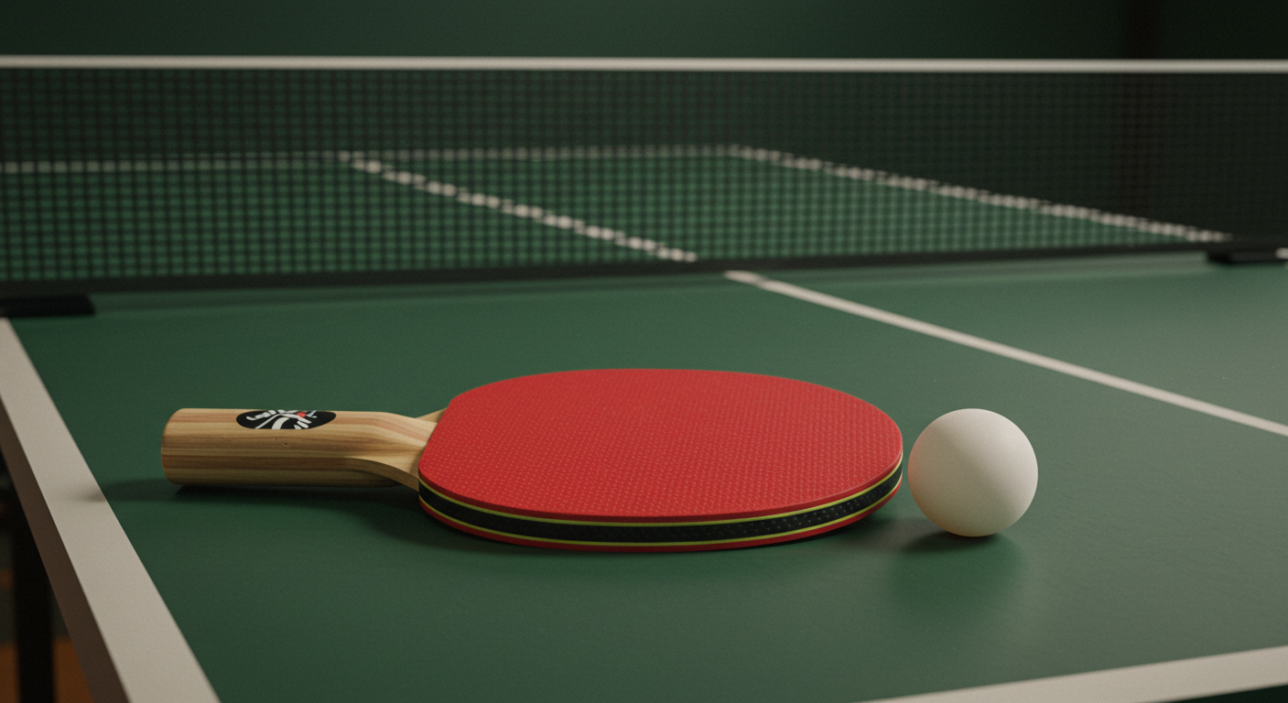
Your racket, often referred to as a paddle or bat, is the most personal item you will own in table tennis. It directly influences your ability to control the ball, generate spin, and execute strategies.
Parts of a Racket
A typical racket has three core components:
-
Blade: The wooden body of the paddle. It can be made of five or seven plies, sometimes with carbon layers for added stiffness.
-
Rubber: The outer surface, available in various textures and thicknesses. Smooth (inverted) rubber creates more spin, while pimpled or anti-spin rubbers reduce it.
-
Sponge: Found between the blade and rubber, this layer adds bounce. A thicker sponge results in more speed, while a thinner one favors control.
Choosing a Racket
For beginners, a pre-assembled racket with all-round attributes is best. These rackets are designed to offer a balanced mix of speed, spin, and control. As you develop your playing style, you may move to custom setups with specific blades and rubbers tailored to your strengths.
Common Grip Styles
-
Shakehand Grip: This style mimics a handshake and is the most widely used worldwide. It offers a comfortable grip for both forehand and backhand strokes.
-
Penhold Grip: Common in East Asia, the handle is held like a pen. It allows for more wrist flexibility and strong forehand play, but has limited backhand reach.
Care and Storage
-
Use a racket case to protect the rubber from dust and moisture
-
Avoid placing the paddle in extreme heat or direct sunlight
-
Clean the rubber surface regularly using water and a soft sponge or rubber cleaner
Taking care of your racket not only improves its lifespan but also ensures you get consistent performance from session to session.
Table Tennis Balls
Though small and lightweight, the ball is one of the most technically standardized pieces of equipment. Every rally depends on the quality, roundness, and durability of the ball used.
Official Ball Specifications
According to international standards, a table tennis ball must:
-
Be 40 millimeters in diameter
-
Weigh 2.7 grams
-
Be made of ABS plastic
-
Have a matte finish in white or orange
The shift from celluloid to ABS plastic in recent years has improved safety and made balls more environmentally friendly.
Understanding Star Ratings
Balls are rated from 1 to 3 stars, indicating their quality:
-
1-Star Balls: Inexpensive and suitable for beginners or casual play. These may have slight imperfections in shape or bounce.
-
2-Star Balls: Better build quality, often used for training at clubs.
-
3-Star Balls: Official competition grade. These are tested for bounce uniformity, roundness, and durability.
If you are just starting, 1-star balls are fine for learning. However, upgrading to 2 or 3-star balls offers better consistency and prepares you for match conditions.
Comparison Table
| Star Rating | Best For | Durability | Bounce Accuracy |
|---|---|---|---|
| 1-Star | Practice, casual use | Low | Inconsistent |
| 2-Star | Club training | Moderate | Improved |
| 3-Star | Competition | High | Very consistent |
Other Tips
-
Store balls in a dry, temperature-controlled space
-
Avoid stepping on them as they crack easily
-
Replace damaged or dented balls immediately
The right ball enhances the feel and tempo of each rally, making it easier to practice strokes and footwork effectively.
Shoes and Clothing
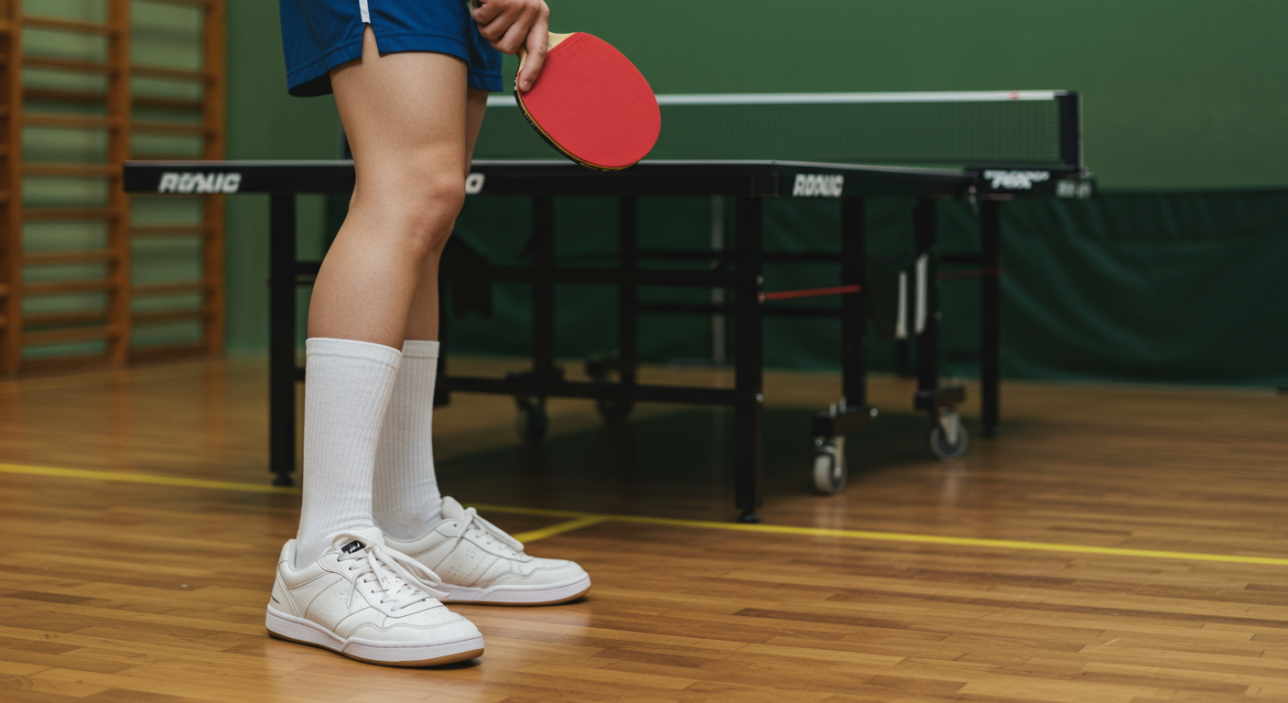
While many new players focus mainly on the paddle and table, having the right shoes and clothing is just as important. Table tennis demands quick lateral movement, explosive footwork, and stability. Without proper gear, your mobility and comfort may suffer.
Table Tennis Shoes
Specialized shoes for table tennis are designed for indoor court use. They are different from running shoes or cross-trainers in key ways:
-
Grip: Table tennis shoes have thin rubber soles that grip smooth floors, helping prevent slipping.
-
Weight: Lightweight design allows for fast changes in direction.
-
Flexibility: Soft, bendable materials support quick footwork and dynamic positioning.
-
Cushioning: Moderate cushioning protects the feet without being bulky.
Avoid running shoes, which often have high soles and extra padding that slow you down and raise the risk of ankle rolls during side-to-side movement.
Clothing
There is no strict dress code for casual play, but breathable, comfortable athletic clothing works best. Most players wear:
-
A lightweight T-shirt or jersey
-
Athletic shorts (not too baggy)
-
Sweat-absorbent socks
-
Optional wristbands or headbands for sweat control
In club or tournament settings, uniforms may be required, and some competitions restrict shirt colors if they match the ball. For example, avoid white shirts when using white balls, as this makes it harder for opponents to track the ball in play.
Optional Accessories
Once you have the basics, there are several accessories that can enhance your training, prolong your equipment’s lifespan, and help keep your sessions organized.
Racket Case
A soft or hard case helps protect your paddle’s rubber from dust, scratches, and moisture. Some even include pouches for balls or small accessories.
Edge Tape
This thin protective strip wraps around the edge of your paddle blade. It prevents chips and damage from accidental knocks against the table or floor.
Ball Collection Nets
Useful for multi-ball drills or robot training. These nets collect loose balls, making cleanup fast and efficient, especially in training environments.
Training Robots
A table tennis robot is a machine that fires balls at you with adjustable speed, spin, and frequency. Robots are ideal for solo practice and consistent stroke development. While expensive, they are valuable for serious players.
Scoreboards and Timers
Some players or clubs use manual flip scoreboards or digital timers for practice matches. These tools are optional but useful in more formal settings.
Ball Storage Containers
If you train frequently, keep your balls organized in a proper container to avoid damage and make transportation easy. Some boxes come with slots that prevent balls from rattling or cracking.
While none of these items are necessary to get started, they can make practice more productive and enjoyable over time.
Home vs Club Setup

Your environment also affects your equipment needs. What works for a professional training center may not suit a garage or backyard setup.
Playing at Home
If you play at home, especially in tight spaces, prioritize foldable tables and compact gear. Clip-on nets, pre-assembled paddles, and 1-star balls work well. Safety and storage are also key, so look for equipment that is easy to pack away when not in use.
For flooring, avoid hard concrete if possible. A soft mat or wooden floor gives better support and reduces injury risk. Ensure good lighting and enough clearance behind the table to move freely.
Playing at a Club
Clubs often use competition-grade tables, 3-star balls, and encourage members to bring their own rackets. Footwear rules are usually enforced, so proper court shoes are expected. Most clubs have high ceilings, good lighting, and spacious layouts designed for regulation play.
If you plan to join a league or take lessons, it helps to train using similar gear at home. This creates consistency and improves confidence during matches.
Final Thoughts: Basic Equipments to Play Table Tennis
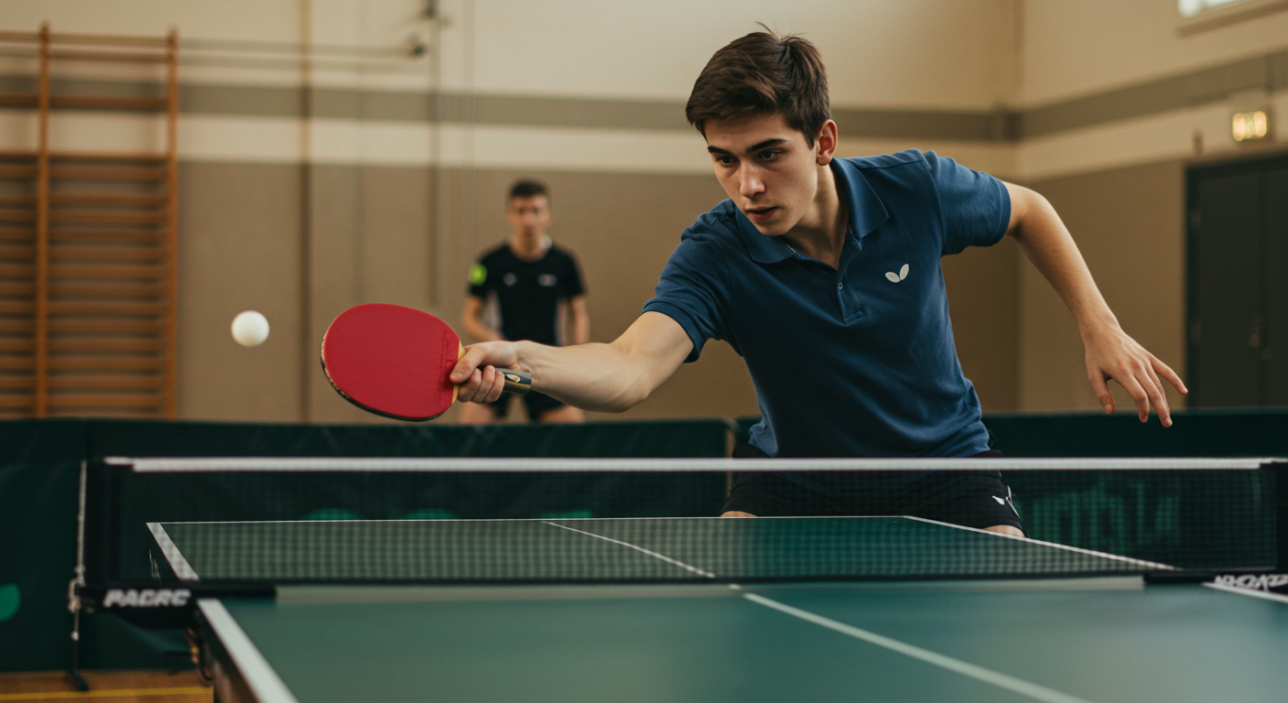
Knowing the right equipments to play table tennis makes all the difference in how you perform and how much you enjoy the game. While the essentials may seem simple — table, net, paddle, and ball — every detail affects your experience. A slightly warped table, poor-quality rubber, or unstable net can disrupt play and slow your progress.
Investing in good-quality equipment from the beginning gives you the best chance to develop strong fundamentals. As you grow in the sport, accessories like training aids, protective gear, and advanced footwear become more relevant. Still, the focus should always be on improving your game, not just adding more gear.
No matter your budget, playing style, or environment, there is a setup that will work for you. Start with the basics, stay consistent, and upgrade only when needed. With the right tools and regular practice, table tennis can become one of the most rewarding and enjoyable sports in your life.
Frequently Asked Questions
1. Can I use a table that is not regulation size at home?
Yes, compact tables are perfectly fine for casual play or skill development. However, if you plan to compete, try to practice on full-size tables when possible.
2. What is the best paddle for beginners?
Look for a pre-assembled paddle with all-round characteristics. These provide a balanced mix of spin, speed, and control.
3. How many balls should I keep on hand?
For practice, keep at least 10 to 20 balls. This prevents constant stopping to retrieve them. For competitive play, bring 3 to 5 high-quality balls.
4. Do I need table tennis shoes right away?
Not strictly, but proper shoes offer better grip, reduce injury risk, and help with fast movements. Avoid running shoes with thick soles.
5. Are training robots worth buying?
They are useful for dedicated solo practice but can be expensive. Consider one if you train seriously and have the budget.
6. Can I use outdoor tables indoors?
Yes, but they often have harder surfaces and different bounce characteristics. Indoor tables give better feel for competitive play.
7. How do I maintain my equipment?
Clean your paddle rubber with a damp sponge, store it in a case, and keep balls in a dry container. Check the net tension regularly.
